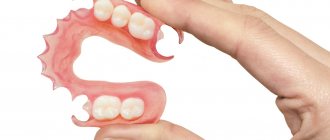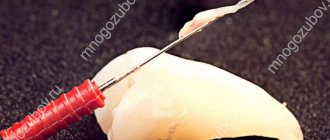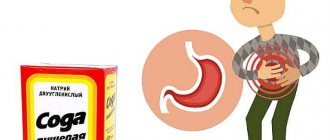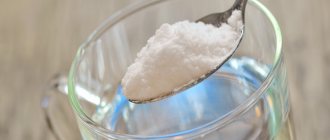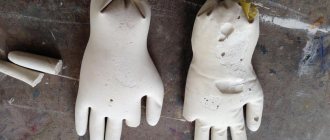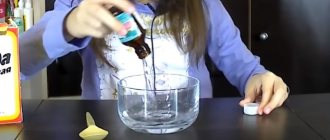Every woman knows recipes for homemade face masks. The effect of using natural ingredients is amazing. There are also several effective remedies for cleaning teeth that are easy to prepare from available ingredients.
Do you know how to make your own toothpaste? For you - information about the beneficial properties of homemade teeth cleaning compositions, simple recipes. After a month of using homemade paste, you will certainly be pleased with the results.
The best toothpaste – homemade
Commercial toothpastes are often very harsh and contain many harmful preservatives and additives, so homemade toothpaste can be a good alternative. This is especially true for those with sensitive teeth, because it is very difficult for them to find a good working paste without harmful side components.
Making your own toothpaste is an excellent opportunity to get a product with the effect you need. This paste will perform all its tasks: clean teeth from plaque, destroy pathogenic bacteria, whiten and strengthen enamel and freshen breath. Before moving on to recipes, you need to understand what is good and what is bad for your teeth.
Action
After a month of using the natural product, the first results appear. If all recommendations are followed, the positive effect of use is noticeable.
Home remedies have a positive effect on tooth and gum tissue:
- remove plaque;
- freshen breath;
- reduce the number of harmful bacteria;
- prevent rotting processes in the mouth;
- strengthens teeth and gums.
Note! Violating the proportions, using coarse abrasives, or rubbing the surface too hard will do harm, not good. If you are not attentive to details, buy ready-made paste at a store or pharmacy.
Causes of tooth enamel destruction
Healthy teeth have strong enamel and healthy gums. But negative external and internal factors can lead to gum inflammation and enamel destruction. To avoid this, you need to take comprehensive measures, which include: oral care, getting rid of bad habits, replenishing the body with essential minerals and vitamins, as well as regular visits to the dentist for preventive examination and dental treatment (which includes professional teeth cleaning and whitening teeth).
Teeth deteriorate for the following reasons:
— Incorrect and irregular oral care.
— Diseases of the teeth and gums (caries, periodontal disease, etc.).
— Brushing your teeth with coarse abrasives (they severely scratch the enamel and can lead to the development of caries in the future).
— All types of whitening (healthy enamel has a yellowish tint).
— Sudden changes in temperature (eating hot and cold foods).
— Eating foods high in sugar and acids.
- Smoking.
— Incorrect bite (enamel wears off).
— Age (with age, the enamel becomes thinner and wears off, degenerative changes occur in the gums).
— Hormonal disorders (pregnancy, lactation).
— Lack of vitamins and minerals in the body.
Why do we brush our teeth
Let's talk about why we brush our teeth and what a healthy toothpaste should offer. We brush to remove any sour, sweet, starchy food particles and plaque—the often-forming slimy biofilm that leads to tooth decay.
Brushing your teeth is a mechanical process and the best way to protect against caries. You'll be surprised to learn that you can brush without using toothpaste at all. Just rub the enamel surface, not forgetting the tongue, gums, and with a brush. Don't use hard bristles. Using the dry method is great when you are away from home or between meals. This is much more important than cleaning and rinsing products!
But adding the right toothpaste can make the procedure more effective.
DIY toothpaste
The following ingredients can be included in homemade toothpaste:
1. Baking soda.
Soda brightens enamel well and can be included in whitening pastes. It also has a bacteriostatic effect. But it can damage the enamel, since it is an abrasive, so it can be used no more than once a week.
2. Salt.
Just like baking soda, it has a whitening effect and is used once a week.
3. Citric acid.
Whitens enamel, refreshes the smell, but also cannot be used daily, as it leads to thinning of the enamel.
4. A decoction of oak and stem bark.
These components have an antimicrobial, anti-inflammatory effect, freshen breath and strengthen the gums.
5. Decoction, extract or essential oil of sage.
This plant is indispensable for bleeding gums; sage has anti-inflammatory, antimicrobial and analgesic effects.
6. Decoction, extract or essential oil of clove or chamomile
It has anti-inflammatory, bactericidal, wound-healing and analgesic effects, and is used in toothpastes for toothache and tooth sensitivity.
7. Decoction, extract or essential oil or extract of rosemary.
It has anti-inflammatory, bactericidal and antispasmodic effects, improves blood circulation in the gums.
8. Decoction, extract or essential oil of tea tree or thyme.
It has a powerful antimicrobial effect, as well as anti-inflammatory, antiseptic and antifungal.
9. Peppermint decoction, extract or essential oil.
Eliminates bad breath and makes breath fresh. Mint also has an anti-inflammatory and tonic effect.
10. Nettle decoction, extract or essential oil.
It has hemostatic, antimicrobial, anti-inflammatory, wound healing properties.
11. Papain.
Papain is a plant enzyme that helps remove plaque and clean teeth.
12. Glycerin.
Glycerin is a trihydric alcohol that is used in toothpaste to thicken. In addition, it has a moisturizing, softening and healing effect on the mucous membrane. Toothpaste for sensitive teeth should not contain noticeable polishing and cleansing particles, sugar, but at the same time it should be rich in minerals, have a delicate taste and effectively remove plaque.
13. Calcium carbonate.
It is used in toothpaste as an abrasive substance with the least traumatic effect; it does not dissolve and does not penetrate tooth enamel.
14. Kaolin (white clay).
Like calcium carbonate, it has a cleansing and whitening effect on teeth.
15. Powder or licorice powder.
Licorice powder gives toothpaste a pleasant taste and creates foam.
How to make toothpaste at home
Making your own toothpaste is quite simple; for this you will need sterile containers and the necessary ingredients. The easiest way to make toothpaste from tooth powder is to take tooth powder with a natural composition and add glycerin and water to it in equal proportions. You will get a softer product without foam and with all the beneficial properties of tooth powder.
If you want to completely make your own toothpaste, then we offer you the best recipes.
Toothpaste Recipes
Therapeutic and prophylactic toothpaste
Action
This paste carefully removes plaque, freshens breath, has a bacteriostatic effect and strengthens gums.
How to use
You should brush your teeth with toothpaste twice a day. First, brush your teeth with the paste, and then keep it in your mouth for another 2-5 minutes.
Composition per 50 g of toothpaste
20 grams of mint hydrolate; 15 grams of sage hydrosol; 5 grams of glycerin; 2 grams of licorice powder; 0.4 grams of mumiyo (2 tablets); 5 grams of calcium carbonate powder; 0.9 grams of guar gum; 20 drops of grapefruit seed extract; 5 drops of tea tree essential oil.
For reference:
Hydrolate is a liquid obtained by steam distillation of plant materials (essential oils). It has all the properties of these oils, but has a significantly lower concentration compared to them. Hydrolates can be replaced with decoctions or herbal infusions, which are brewed according to the instructions on the package.
How to make toothpaste
Mix half of the mint hydrolate with powdered calcium carbonate and mumiyo, then stir until smooth. Mix sage hydrolate and the rest of mint hydrolate with glycerin. And then add guar gum and beat everything thoroughly - preferably with a mixer or blender until you obtain a homogeneous gel-like liquid. Combine the two parts of liquids and blend with a blender until smooth. Now you can add licorice powder, tea tree essential oil and grapefruit seed extract to the mixture. The latter will act as a preservative in homemade toothpaste. Mix the resulting toothpaste thoroughly and place it in a sterile jar with a lid. It is better to store this toothpaste in the refrigerator and use it within 2-3 days, as it can dry out and germs can multiply in it.
Homemade whitening toothpaste
Action
This toothpaste works well to remove plaque and whiten teeth. It contains baking soda and sea salt, so it is not suitable for daily care, it needs to be used in courses.
Composition for 80 g of toothpaste
5 grams of crushed sea salt; 15-20 grams of baking soda; 30 milliliters of chamomile decoction; 5 grams of licorice root powder; 5 grams of white clay; 15 grams of glycerin; 5 drops rosemary essential oil; 5 drops of lemon essential oil; 5 drops of peppermint essential oil.
How to make toothpaste from baking soda
Dilute white clay with part of the chamomile decoction and add glycerin there; add salt and licorice root powder to the rest of the decoction. Mix everything together and add essential oils to the resulting toothpaste, mix everything thoroughly and place in a sterile sealed container.
Whitening toothpaste for sensitive teeth
Action
The paste has a whitening effect and removes plaque well without damaging the enamel. Also, the components of the paste have an antiseptic, anti-inflammatory and astringent effect, which is beneficial for the gums. Unlike store-bought toothpastes with a whitening effect, this paste can be used for sensitive teeth and damaged enamel, as it is very gentle and protects teeth from the formation of caries. Toothpaste for sensitive teeth does not contain soda and salt, so it is suitable for daily use.
Composition per 100 g of DIY toothpaste
40 grams of lavender hydrosol; 25 grams of white clay (kaolin); 25 grams of calcium carbonate; 5 grams of glycerin; 3 grams of zinc oxide; 1 gram papain; 1 gram of potassium sorbate; 15 drops of lemon essential oil; 10 drops tea tree essential oil.
How to make homemade toothpaste
In a ceramic or porcelain bowl, combine lavender hydrolate with glycerin; in another container, mix kaolin, calcium carbonate, papain, zinc oxide and potassium sorbate. Carefully pour the first liquid part into the dry part and mix everything thoroughly. If the consistency of the resulting toothpaste is too thick, add more hydrolate. Then add essential oils and mix well. Place the toothpaste in a sterile container with a lid. Store in the refrigerator and use within 3-4 days.
Toothpaste for gums for inflammation and bleeding
Action
The action of this toothpaste is primarily aimed at strengthening the gums. The ingredients included in the paste have an antimicrobial, anti-inflammatory, wound-healing, soothing and hemostatic effect. They also remove plaque and bad breath.
Composition per 100 g of toothpaste
70 grams of white clay, 20 ml of nettle decoction; 10-15 grams of liquid honey (1 teaspoon); 10 drops of water-based propolis; 5 drops of sage essential oil; 5 drops of chamomile essential oil.
How to make your own toothpaste
We dilute the clay with nettle decoction to a thick paste, add propolis to the mixture. Add essential oils to the honey, mix thoroughly and add to the diluted clay with propolis. Mix the homemade toothpaste well and place it in a sterile container.
DIY herbal toothpaste
Action
Natural herbal toothpaste has a bactericidal, astringent, hemostatic and anti-inflammatory effect.
Composition of natural toothpaste
2 parts Potentilla erecta powder; 2 parts calamus powder; 1 part birch bark powder.
How to make your own toothpaste
Powdered herbs can be purchased at a herbal or herbal pharmacy. Mix all the herbs together in the suggested proportions with warm water to obtain a paste-like consistency.
How to brush your teeth
You can brush your teeth with herbal toothpaste 2 times a day; after brushing your teeth, you should not eat for 1 hour.
What ingredients should you avoid?
Manufacturers primarily strive to ensure that the hygiene product is pleasant to use and retains its properties longer. Therefore, most industrial products contain components that are absolutely useless from the point of view of caring for teeth and gums,
and can even be harmful:
- Glycerol. The main purpose of this component is to prevent the hygiene product from drying out in the tube. The substance can envelop each tooth, preventing the enamel from fully recovering.
- Triclosan. This substance fights pathogenic bacteria that accumulate in the oral cavity. But there is also evidence that triclosan can have a negative effect on the human nervous system.
- Fluorine. Experts say that this component protects teeth from caries. But excess fluoride in the body can cause very serious complications. It is especially dangerous for women to use products with this component during pregnancy.
- Sodium lauryl sulfate. Manufacturers add this component to the hygiene product to form lush foam. In excess, this substance can negatively affect the functioning of all organs and systems.
Homemade toothpaste can be prepared without the ingredients described above. Such a product will be inexpensive and can effectively protect the oral cavity from common dental diseases. It will be useful for children to use such compositions.
